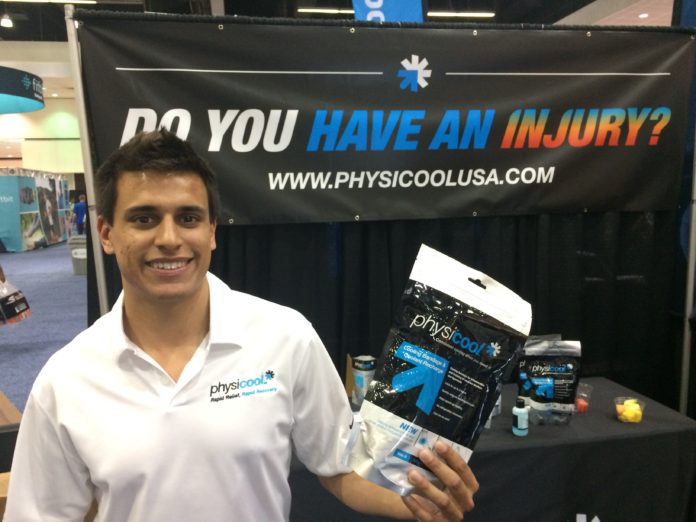Physicool: How the science works
 Image 1. Temperature before exercise Image 2. Temperature after 15 minutes of moderate exercise – no bandage Image 3. Temperature taken 5 minutes after the bandage was applied Image 4. Temperature 10 minutes after the bandage had been applied – showing a 7°C drop Image 5. Temperature 15 minutes after the bandage had been applied – showing a 10+°C drop Image 6. Temperature 60 minutes after the bandage had removed. The bandage was applied for 30 minutes Each bandage will cool for 2 hours. The cooling benefits of Physicool far outlast those of gels, sprays or ice packs.
Image 1. Temperature before exercise Image 2. Temperature after 15 minutes of moderate exercise – no bandage Image 3. Temperature taken 5 minutes after the bandage was applied Image 4. Temperature 10 minutes after the bandage had been applied – showing a 7°C drop Image 5. Temperature 15 minutes after the bandage had been applied – showing a 10+°C drop Image 6. Temperature 60 minutes after the bandage had removed. The bandage was applied for 30 minutes Each bandage will cool for 2 hours. The cooling benefits of Physicool far outlast those of gels, sprays or ice packs.
The science behind cooling by rapid evaporation
Evaporation is the process which involves a liquid changing into a gas. When a liquid evaporates, the warmest particles are lost first, with the remaining particles staying cooler. As alcohol evaporates at a lower heat and faster rate than water, it gives it a much faster and greater rate of evaporation. This allows the coolant to draw the warmest particles away from the deeper tissues, resulting in a cooling benefit to the whole of the affected or injured area.
Physicool cooling with open-cell technology
The unique Physicool bandage has been scientifically developed to bind the coolant to the surface of the bandage, will allows a sustained delivery of coolant when the bandage is worn. The unique weave of the bandage employs open-cell technology, which traps the coolant in the ‘cells’, real easing a steady and continual cooling effect.
If a further period of cooling is required, more coolant can be applied directly to the bandage when it is in place, topping it up. Thanks to the exceptional binding effect of Physicool, there is no need to remove the bandage to do this.
Compression
Research has found that, by simultaneously compressing the affected area, the therapeutic benefits of cold therapy are enhanced (Capps, 2007). Because of this, Physicool combines compression and support with sustained cooling, with the aim of compression to stop hemorrhaging and reduce swelling. More on Compression
Cryotherapy
Cryotherapy, also known as cooling therapy, is widely used as a treatment in both the early management and the continuing rehabilitation of soft tissue injuries. The process works by lowering the temperature of the underlying tissues in the body by the withdrawal of heat. This helps to achieve a therapeutic effect, reducing blood flow, pain, metabolism and tissue temperature in the affect area. When Physicool bandages are used correctly, they should feel warm to the touch on the outside. More on Cryotherapy
















